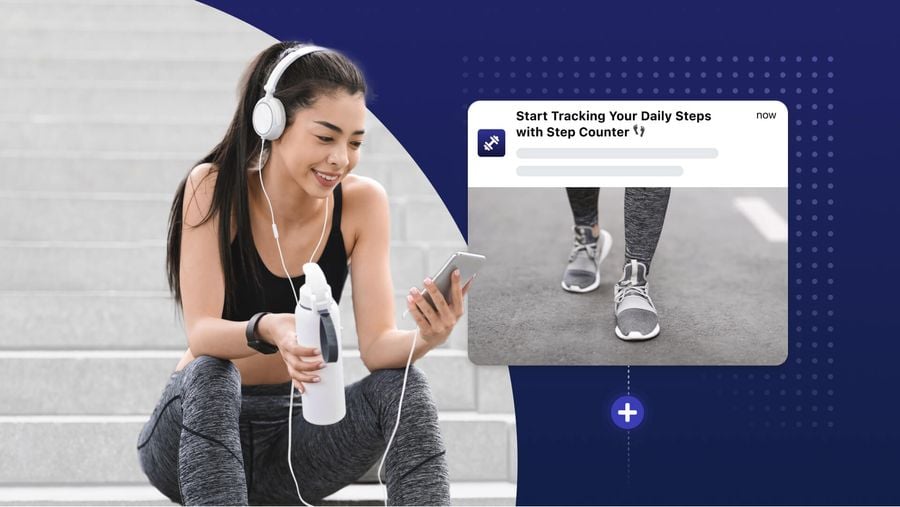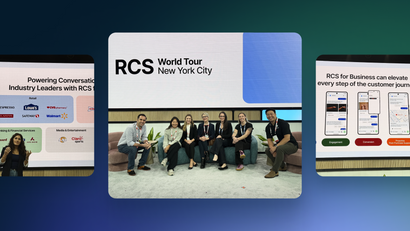What is a user journey?
User journey refers to the sequential steps that users progress through when using an app. These steps typically involve an app interaction or experience and they ultimately lead toward a specific goal. For instance, for an eCommerce app, the end goal may be completing a purchase, whereas for a gaming app the end goal might be to beat the final game level.
What’s the difference between a customer journey and a user journey?
As a general rule, a customer journey can include digital and physical interactions with a brand, whereas a user journey refers more exclusively to a digital experience. For instance, a retail brand’s customer journey could involve digital customer touchpoints on a website or mobile app, as well as in-store interactions. In contrast, the user journey for a calendar app would include only digital touchpoints within the app and interactions via messaging channels such as push notifications and email.
What are the stages in a mobile app user journey?
User journey stages can vary between apps and are often informed by the app's monetization model and category. For instance, a free gaming app with 15 levels will have a different user journey than a fitness app that offers in-app workout classes for purchase.
Although no user journey is exactly the same, there are some common user journey stages that many apps share.
App Discovery & Awareness Stage
The Google Play Store and iOS App Store are competitive marketplaces. Today, there are almost three million apps available for download on the Google Play Store alone. The initial discovery and awareness stage of the user journey refers to the period before a user chooses to download an app as they peruse available options. In this initial stage of the user journey, app store optimization is key to ensure that users can easily search and find your app and compel them to download it.
App Download (User Acquisition) Stage
As the name suggests, this user journey stage occurs when a user takes action and downloads an app. This is the first conversion point in a user journey and is essential to your app's growth and success. In addition to optimizing an app store listing, improving the quantity and quality of user reviews can inspire trust and encourage new users to download your app.
App Onboarding & Exploration Stage
In this stage, users are introduced to your app for the first time. Creating an app onboarding process or "flow" can help you orient users to the app interface, introduce key features, reinforce value props, earn necessary user permissions (like location sharing or push notification permission), and generally set users up for success in your app. App onboarding plays a critical role in long-term app retention and engagement — if users are never properly introduced to your app, it can cause friction and churn at an early stage in your user journey.
App Reuse Stage
The app reuse stage of the user journey is focused on driving app engagement and re-engagement. The majority of apps have an average 90-day retention rate of less than 25%. In short, 75% of users churn after the app onboarding and exploration stage. If you consider the rising costs of user acquisition, it's clear why this journey stage is so important to long-term app growth and profitability. Whereas the onboarding stage is focused on introductions, this stage is focused on driving key feature adoption, improving daily, weekly, and monthly active users, and beginning to nurture app loyalty. The secret to success during the stage is to ensure that users are getting value out of your app. Messaging channels can be used to provide helpful tips, encourage play or account setup, point out new features, reward and reinforce engagement, and much more.
In-App Purchase (App Monetization) Stage
If the app download is the first conversion point in your user journey, in-app purchases are typically the second conversion point and the primary goal that many user journeys build towards. For instance, for a food delivery app, this conversion point occurs when a user places their first delivery order. For an eCommerce apparel brand, this conversion is synonymous with a user's first in-app clothing purchase.
Yet it's also important to remember that in-app purchases have different significance within different app monetization models. For many "freemium" apps, for example, most revenue may be earned from a relatively small portion of users that reach this conversion point. For those types of apps, it's less important that all users reach this goal. Instead, these user journeys are often structured on identifying and nurturing the most qualified users to make a purchase. Identifying the portion of users you need to reach this goal can help you better plan your user journey and messaging.
It's worth noting that some apps don't earn revenue from in-app purchases and may earn money from advertisements or data collection. If your app does not feature in-app purchases, then the end goal of your user journey is likely user loyalty and retention as opposed to in-app purchases and re-purchase. For free apps that feature in-app advertisements, boosting long-term engagement and retention will inevitably boost the ad audience and revenue earned.
Re-Purchase Stage
As a general rule of thumb, nurturing an existing customer to re-purchase costs significantly less than acquiring a new user. That's especially true for apps; the average cost of user acquisition in 2019 was a staggering $3.52 USD, which has continued to rise in recent years. For many user journeys, the next step after an in-app purchase is to encourage a repeat conversion. At this stage, user messaging is a critical tool to encourage re-purchases. Successful apps will often follow up on purchases, provide relevant recommendations, and further personalize the user experience based on their first purchase. Although that may sound complex, all of this can be achieved through smart messaging via email, push notifications, and in-app messaging. To hone your messaging at this user journey stage, it's important to understand user expectations, be mindful of preferences, and choose the right channel for each use case.
User Loyalty & Retention Stage
Similar to the app reuse stage, this stage is centered around app engagement. At this point in the user journey, personalization is perhaps even more important to keep users returning and nurture long-term loyalty. That can include personalizing purchase recommendations or app experiences, customizing promotions, and unlocking new features.
As a user progresses throughout your app's user journey, their needs, goals, and expectations for your app will evolve. Like any healthy long-term relationship, it's important that the app experience grows with the user rather than repeating the same steps from early on in the journey. In addition to routinely improving your app experience, your messaging strategy should also become more targeted. Using advanced segmentation and personalization features can help ensure that the app experience evolves at exactly the right pace for each individual user. The right engagement solution can help you automate your messaging strategy so that it scales easily yet remains hyper-personalized to each user and their journey stage.
How to Map Your User Journey
Mapping your user journey can help you to better understand the timeline, milestones, goals, and pain points associated with each stage of your UX and identify opportunities therein. It can be helpful to use a user journey mapping template to guide you through this process.
The free user journey mapping template below can help you answer the following questions:
- How and where does a user interact with your app and what does that experience look and feel like?
- What goals and expectations do users have for your app and how do they evolve throughout the user journey?
- What stages does a user flow through before reaching specific milestones or conversion points in your app journey?
- Are there gaps in your user journey where users are more likely to disengage or churn?
- What communication is needed to help create a more seamless and successful user journey?




